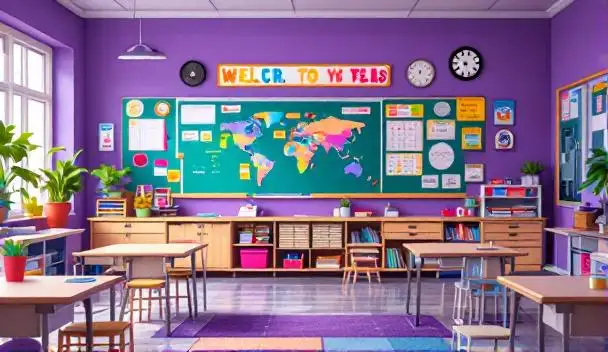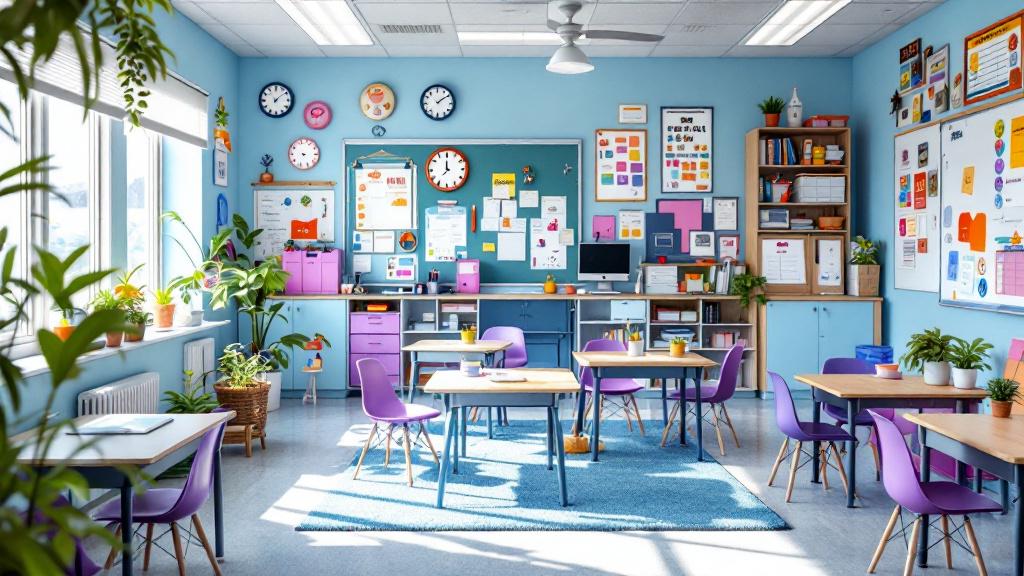Unlocking Potential Through Integrated Support
Integrating Applied Behavior Analysis (ABA) therapy into after-school programs can significantly benefit children with autism spectrum disorder (ASD) and related disabilities. By ensuring continuity of ABA strategies across various educational settings, these programs help children to reinforce skills and exhibit desired behaviors outside the typical classroom environment. This approach leverages individualized support and collaboration among educators, therapists, and families, creating a cohesive and effective pathway to optimized learning and social interaction.
Understanding ABA Therapy in Schools

How does ABA therapy work within a school setting?
ABA therapy in schools integrates evidence-based strategies tailored to support students with autism spectrum disorder (ASD). Therapists, like Board Certified Behavior Analysts (BCBAs) and Registered Behavior Technicians (RBTs), work directly with students in the classroom environment, focusing on essential skills needed for daily academic and social interactions.
The core of ABA therapy is positive reinforcement, which encourages desired behaviors through motivation. For example, when a student successfully engages with peers or participates in class discussions, they may receive praise or a small reward, reinforcing that behavior. This method is particularly effective in enhancing communication and social skills, which are vital for building connections with teachers and classmates.
Many students undergoing ABA therapy have Individualized Education Plans (IEPs) that set personalized goals and outline necessary accommodations. These plans align ABA strategies with the unique needs of each student, allowing for individualized focus on behavioral and academic improvement.
Importantly, ABA does not replace the educational curriculum; it complements it. By promoting independence and enhancing daily living skills, ABA therapy fosters a holistic development approach, supporting students in navigating both the academic environment and their personal growth. This collaboration ensures that the benefits of ABA extend beyond individual sessions and into the broader educational experience, leading to better outcomes in both academic and social arenas.
Benefits of ABA for Children in Educational Settings

How does ABA therapy benefit children with autism spectrum disorder in educational environments?
ABA therapy significantly benefits children with autism spectrum disorder (ASD) in various educational settings. One of the primary advantages is the provision of structured, individualized interventions tailored to enhance communication, academic, and social skills.
Early and intensive ABA interventions can lead to substantial improvements in outcomes for these children. For instance, many studies show that such interventions boost socialization and expressive language abilities. This is achieved through evidence-based strategies like Discrete Trial Training (DTT) and Natural Environment Teaching (NET), which ensure that children learn and apply skills effectively in real-world situations.
Enhancement of communication and social skills
Communication is a vital aspect of a child's development. ABA therapy employs specific techniques to enhance these skills, resulting in improved interactions among peers. By focusing on social skills training, children with ASD can learn how to engage in appropriate conversations and build relationships, promoting a sense of belonging in their school community.
Development of essential life skills and independence
Moreover, ABA therapy fosters the development of essential life skills, paving the way for greater independence. Through targeted interventions, children learn to manage daily tasks, enhancing their ability to navigate their environments. By acquiring coping strategies, students can handle emotions and challenges more constructively.
Collaboration among families, therapists, and teachers
Another significant benefit lies in the collaboration among families, therapists, and teachers. This teamwork ensures that each child's unique needs are addressed, creating a supportive educational environment tailored to optimize their learning experiences. Establishing effective communication channels among all parties fosters a unified approach, fostering consistency in applying strategies at home and in school.
In summary, the integration of ABA therapy within educational settings provides a multifaceted approach to supporting children with ASD, enhancing their overall learning experience and laying the groundwork for future success.
Facilitating Transitions with ABA

What role does ABA play in school-based transition services?
ABA (Applied Behavior Analysis) plays a crucial role in school-based transition services by providing individualized strategies that enhance student attention and engagement. This is particularly significant for students with Autism Spectrum Disorder (ASD), as ABA helps identify specific behaviors that may hinder academic and social success.
Enhancement of academic and social success
Utilizing ABA techniques enables educators to create tailored interventions aimed at teaching important life skills. This focus on individual needs promotes independence and assists students in transitioning effectively from school to post-school activities, such as vocational training, higher education, or community engagement.
Collaboration for consistent support
A collaborative approach is essential in ABA transition services. Educators, families, and service providers work together to ensure that interventions are consistent and effective. This open communication fosters a supportive network, crucial for student success during this critical period.
Integration techniques for life skills and independence
Integration techniques, such as teaching social skills and self-management strategies, ensure that students not only excel academically but also develop the necessary interpersonal skills to interact confidently in diverse environments.
The overall goal of employing ABA in transition services emphasizes enhancing both academic outcomes and social interactions for seamless integration into community settings.
Classroom Implementation of ABA Strategies

How can teachers implement ABA strategies in the classroom?
Teachers can effectively implement ABA strategies in the classroom through a variety of methods. Establishing clear routines is fundamental, as it provides a predictable structure that reinforces expected behaviors. Regularly practicing these routines enables students to understand behavioral expectations and consequences for misbehavior better.
Incorporating visual strategies, such as token boards and charts, can significantly enhance communication. These tools serve not only to outline expectations but are also engaging for students, particularly those who respond well to visual cues.
Adapting teaching plans for individual needs
Differentiating instruction is crucial in a classroom with diverse learners. Teachers should adapt lesson plans to cater to individual student needs, ensuring each child can engage meaningfully with the content. This may include modifying assignments to align with a student's interests or utilizing supplementary resources tailored to their learning style.
Positive reinforcement and student focus
Emphasizing positive reinforcement is vital in creating a supportive learning environment. Encouraging appropriate behaviors through praise and small rewards can motivate students to engage actively and reduce reliance on punitive measures.
Proactive measures for minimizing distractions
Implementing proactive strategies is essential for minimizing classroom distractions. Techniques such as arranging seating strategically, providing opportunities for regular breaks, and using sensory tools help maintain focus. These measures are particularly beneficial for students with attention challenges, supporting overall productivity in the classroom.
By combining these strategies, teachers can enhance the educational experience for all students, fostering an environment conducive to learning and growth.
Effective Integration Strategies for After-School Programs
What are effective strategies for integrating school-based ABA therapy into after-school programs?
Integrating school-based ABA therapy into after-school programs requires a systematic approach that aligns educational goals with therapeutic strategies. One of the most effective methods is establishing a collaborative team approach. This involves bringing together educators, therapists, and families to discuss student progress and ensure that everyone is on the same page regarding goals and intervention strategies.
Collaborative team approach
Collaboration is not just about communication; it’s about building a cohesive support network that meets each child’s unique needs. This can include regular meetings to discuss strategies and adjustments needed to help students thrive in both academic and social settings.
Staff training on ABA principles
Another critical aspect is staff training. Comprehensive training for school staff on ABA principles is essential. By equipping them with techniques that promote positive behaviors and learning, teachers and after-school program staff are better prepared to support students effectively. Focused training should emphasize practical application of ABA strategies like Discrete Trial Training (DTT) and Positive Reinforcement.
Individualized Behavior Intervention Plans (BIPs)
The creation of Individualized Behavior Intervention Plans (BIPs) is vital. These should be based on Functional Behavior Assessments (FBAs) to tailor interventions specifically to each student’s challenges and strengths. BIPs detail how to address behaviors, ensuring that support is personalized and practical for the school environment.
Consistent reinforcement systems and family involvement
Lastly, establishing consistent reinforcement systems can significantly enhance student engagement. Integrating visual supports and structured learning environments helps reduce anxiety and promotes predictability. Strong family involvement is also crucial; parents can reinforce skills learned in both settings, which helps maintain consistency and supports the student’s emotional well-being across environments.
Overcoming Challenges in After-School Integration
What are the challenges of implementing ABA techniques in after-school settings?
Implementing ABA techniques in after-school settings presents several hurdles. A prevalent issue is inadequate training for staff, resulting in misconceptions about ABA methodology. Many educators report feeling unprepared to manage challenging behaviors effectively, impacting the consistency and fidelity of interventions used. This can lead to a misapplication of principles that undermines the overall effectiveness of ABA programs.
How does administrative support impact the success of ABA programs?
Lack of administrative support can be a significant barrier to successful implementation. Without backing from school leadership, resources and policies that facilitate ABA strategies may not be prioritized, limiting training opportunities and ongoing support for educators. This absence of support can lead to frustration among staff and compromise the quality of interventions provided to students.
What role does resistance from staff and parents play?
Resistance from some staff and parents complicates the adoption of ABA techniques. Misunderstandings surrounding ABA—such as the belief that reinforcement equates to bribery—can stymie discussions about its benefits. Addressing these misconceptions requires effective communication and education about the effectiveness of ABA in supporting students.
How can BCBAs provide effective guidance?
To combat these challenges, ongoing training and support from Board Certified Behavior Analysts (BCBAs) are crucial. BCBAs can help staff understand and implement ABA strategies effectively, ensuring adherence to evidence-based practices. Providing resources and continuous professional development helps staff feel more confident and capable in applying ABA, ultimately benefiting students.
| Challenges | Description | Possible Solutions |
|---|---|---|
| Inadequate Training | Staff may lack training in ABA principles, leading to misconceptions and ineffective interventions. | Provide comprehensive training programs |
| Administrative Support | Lack of support can limit resource allocation for ABA practices. | Foster strong leadership endorsement |
| Resistance from Parents | Some parents may resist ABA techniques due to misunderstanding its principles, impacting implementation. | Educate parents on the benefits of ABA |
| Guidance from BCBAs | Support from BCBAs is crucial for successful implementation, but may not always be readily available. | Establish a mentorship and support system |
Creating a Supportive Environment with ABA Integration
How can structured environments benefit ABA integration in after-school programs?
Structured environments significantly enhance the integration of ABA therapy in after-school programs. By providing predictability and reducing anxiety, structured settings are particularly beneficial for students with autism spectrum disorder (ASD). Incorporating visual supports, such as schedules and cues, allows students to understand and follow daily routines more easily. This predictability ultimately enhances their learning experiences.
Establishing reinforcement systems is another effective strategy within these environments. Such systems motivate students and encourage desired behaviors, actively engaging them in the learning process. This positive reinforcement not only helps improve academic outcomes but also fosters a sense of achievement.
Furthermore, data collection plays a critical role in effective ABA integration. By monitoring individual student progress, educators can make timely adjustments to instructional strategies. This ongoing assessment helps ensure the effectiveness of interventions, supporting students in their social and academic growth. As a result, students can navigate after-school environments more effectively, paving the way for success.
| Strategies | Benefits | Application in After-School Programs |
|---|---|---|
| Visual Supports | Enhances predictability | Use of visual schedules to structure activities |
| Reinforcement Systems | Motivates desired behaviors | Token economies to reward participation |
| Data Collection | Tracks progress for timely strategy adjustments | Regular assessments to modify activities and supports |
Collaborative Efforts for Holistic Child Development

What is the role of collaboration in successful ABA integration?
Collaboration plays a crucial role in successfully integrating ABA therapy into educational settings. A cohesive support network involving therapists, educators, parents, and community service providers is essential. This teamwork ensures that interventions are consistently applied across all environments where a child interacts.
Such collaboration significantly enhances the child's ability to generalize new skills. When the same strategies and support systems are used in different settings, children find it easier to transition smoothly between various activities. For example, a behavior intervention plan (BIP) crafted by an ABA therapist works best when all stakeholders, from teachers to parents, understand and implement it uniformly.
Engagement with community-based programs
Community-based public school programs provide ample opportunities for students with Autism Spectrum Disorders (ASDs) to engage with peers, which is vital for promoting social ties and inclusion. Attending school with neighborhood friends and siblings strengthens relationships and allows for important social interactions that can nurture friendship development.
In these settings, individualized educational activities can be tailored to align with each child's interests, boosting academic engagement. As students learn in inclusive environments, they also benefit from peer training programs designed to facilitate interactions between those with ASDs and their classmates, alleviating feelings of isolation.
Promoting social interactions and friendships
Fostering social interactions is at the heart of collaborative efforts in ABA therapy. By integrating social skills instruction into the curriculum and providing consistent reinforcement for positive behaviors, children not only learn necessary academic skills but also develop the social competencies essential for building lasting relationships.
When both school staff and families are well-trained and involved, children receive reinforcement at both school and home. This dual approach contributes to creating a supportive and predictable environment, making skill acquisition more effective and enriching overall developmental outcomes.
Towards Seamless Integration
The integration of ABA therapy into after-school programs signifies a pivotal step towards offering comprehensive support for children with autism. It not only ensures consistency in therapeutic approaches but also enhances the overall learning and social environment for students. This seamless integration relies on robust collaboration and dedication from all parties involved, including educators, therapists, parents, and community members, who work together to unlock each child's potential. As schools and after-school programs continue to adapt and incorporate these methodologies, they pave the way for more inclusive and supportive educational landscapes that cater to the unique needs of children with ASD and related disabilities.
References
- ABA Therapy in Schools: School-Based ABA Services
- Integrating ABA Therapy in Schools: Strategies for Success
- Transitioning from ABA Programs to School Programs
- School-Based ABA Therapy - Surpass Behavioral Health
- School-Based and Center-Based ABA Programs
- Using ABA Therapy in School Settings - Sunbelt Staffing
- Board certified behavior analysts and school fidelity of Applied ...
- ABA Therapy vs School: Making the Right Choice For Your Child
- ABA Therapy vs Speech Therapy for ASD: Which is Better for My ...





































































































